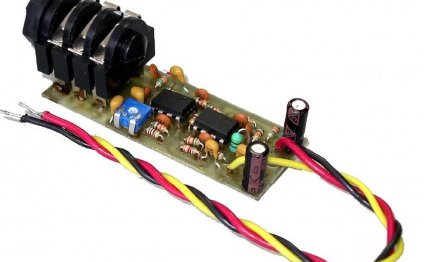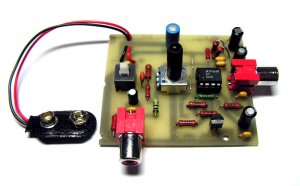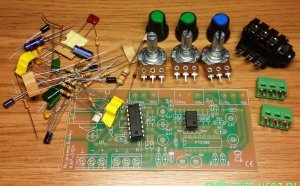
Small Microphone Operator
The microphone is already electrically, constructively in its hull, with a field transistor reinforcing the surface charges of the condenser caused by sound waves. As a load of an electric microphone, I used a field transistor T1 instead of a retractor, consciously thinking that they sound less than bipolar, and together with a microphone tranche, there was a dynamic load scheme. Such schemes are merely rabid. With a similar pattern of two transistors, I've received a coefficient of Kous's height = 85, but it's with 12 volts and a large inlet resistance to the next cascade, but this pattern, unlike the usual resuscitation, will have an advantage of only 4 dB. The T1 microphone cascade is loaded on almost the same cascade (T2, T3), which has a large inlet resistance, and its Cous = 15. Such a tranzist activation provides a compression of sound, where weak, remote signals from the microphone are stronger than loud ones. All thanks to the T3 transistor, the louder the sound, the stronger it opens, and its resistance, which is loaded with T2, decreases and the increase in the cascade decreases.
The bigger the cascades, the stronger his own noise. I'm getting rid of that noise. It's an operating agent with a correction, it's switched on by the repeater and provides a frequencies after 6 kHz, and thus reduces the level of high-frequency noises similar to the sound of the tilting kettle. On microchem DD2 completed head restraint♪ He's also with a correction that can be changed if necessary. In order to be more comfortable, without buoyancy, the frequency in the field of lower frequencies is breached, with the C3 condenser being lower than the condenser capacity. Condenser C3 less than 0.202 mcF is not recommended.
On microchem DD2 completed head restraint♪ He's also with a correction that can be changed if necessary. In order to be more comfortable, without buoyancy, the frequency in the field of lower frequencies is breached, with the C3 condenser being lower than the condenser capacity. Condenser C3 less than 0.202 mcF is not recommended.
This silk doesn't need a loudspeaker, and in the absence of a microphone, you'll have to listen to me to see the sound whip in the headphones. This feature significantly differentiates this pattern from modern surgeries using compression microschems, which, in the absence of a signal, begin to increase their own noises.
Share this Post
Related posts
Microphone Operator
In sound recordings, one of the most important processes is getting an optimal level of signal. It s a signal with maximum…
Read MoreMicrophone Shoe
This article describes my high-quality microphone rapist. Initially, it was designed to be applied in an electric capacitor…
Read More









